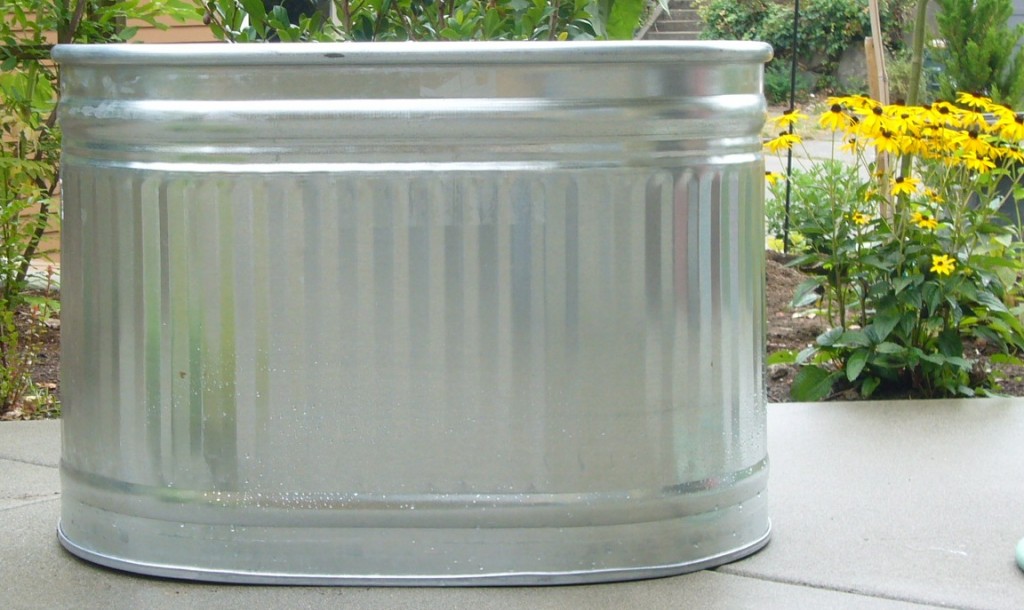Oxbow Farm Tells All : How to Grow Dry Farmed Tomatoes
Any gardener in Seattle will tell you last year was not the greatest year for growing tomatoes. Producing flavorful, fully ripe tomatoes isn’t an easy thing to do if you don’t get enough sun and heat. I have a really hot micro-climate on the south side of my lot so I’m not giving up yet. This year I am going to try a new method using Early Girl tomato starts, hoping to grow some tomatoes that aren’t watery and pulpy. I am all about the flavor.
When I purchased my tomato starts the nice man who was working in the nursery said “Tomatoes are tropical plants. If they get too cold they won’t forget it, so don’t set them out until May 15th.” We’ll see how daring (or foolhardy) I am since I am not going to wait quite that long.
In preparation for my experiment I asked Sarah and Luke from Oxbow Farm (via Facebook) about growing dry farmed tomatoes and here is a summary of what they said:
- Grow them long and leggy, as tall as 1-1 1/2 feet tall.
- Take all leaves off save for the growing tip and its bits.
- Dig a deep hole in your soil the same length as the tomato vine; amend and plunk in your root ball, making sure that the growing tip is not covered by soil.
- Gently replace soil in hole, water deeply, and let ‘er RIP!
The tomato vine will sprout adventitious roots that will take in more water and nutrients for the plant than just relying on the rootball. Usually in a Pac-NW summer, this here tomato will not need any supplemental water. It may eventually LOOK horrid, but will produce tomatoes, and tasty ones, as they are not “watered down” by irrigation.
Our practice at Oxbow in the past has been to water up to fruit set, and then beg off. Easy, tasty, and water-saving!
Another perspective on this practice: 1′-1 1/2′ below soil is cold and damp, and tomatoes do not cotton well to cold and damp. Retards growth, some say. SO, alternatively you may use the trench method whereby you dig a shallow long trench in the soil where you bury the rootball and vine. Since the topsoil dries out faster than the subsoil, this method does not allow for as much forageable moisture for the tomato roots, but in our climate we seek heat more than moisture, non? More watering may be needed this way, but still not as much as simply planting the mere rootball of the tomato. Grow those adventitious roots!
I have to admit burying the vine itself in the ground is a little intimidating, but that is the method I’m going to try. I will be growing my tomatoes in my really big and deep galvanized trough.*
I think the soil in it will be warmer than the soil in the ground, otherwise I would try the trench method. The earth is still pretty cold right now and I’d like to get these Early Girls outside and growing in the next couple of weeks.
Thank you Sarah and Luke from Oxbow!
*Important update from Sarah:
“Dry farming in a container would require additional water as there are no mama earth stores to tap. Even a good and deep trough will dry out eventually and so ground soil is the only option for such a practice…I am sure it would need LESS water than a standardly-planted tomato but still more than the dry farmed practice I outlined.”
Due to the weather I still have some time to get the ground ready for my starts. I’ll plant something else in the trough.


Both Sarah and Luke are rock star farmers. You can find their wonderful results at Ballard Farmers Market and Carnation Farmers Market. Get on their list for winter broccoli (only two weeks in early spring….this year that might happen in June!!!).
HR